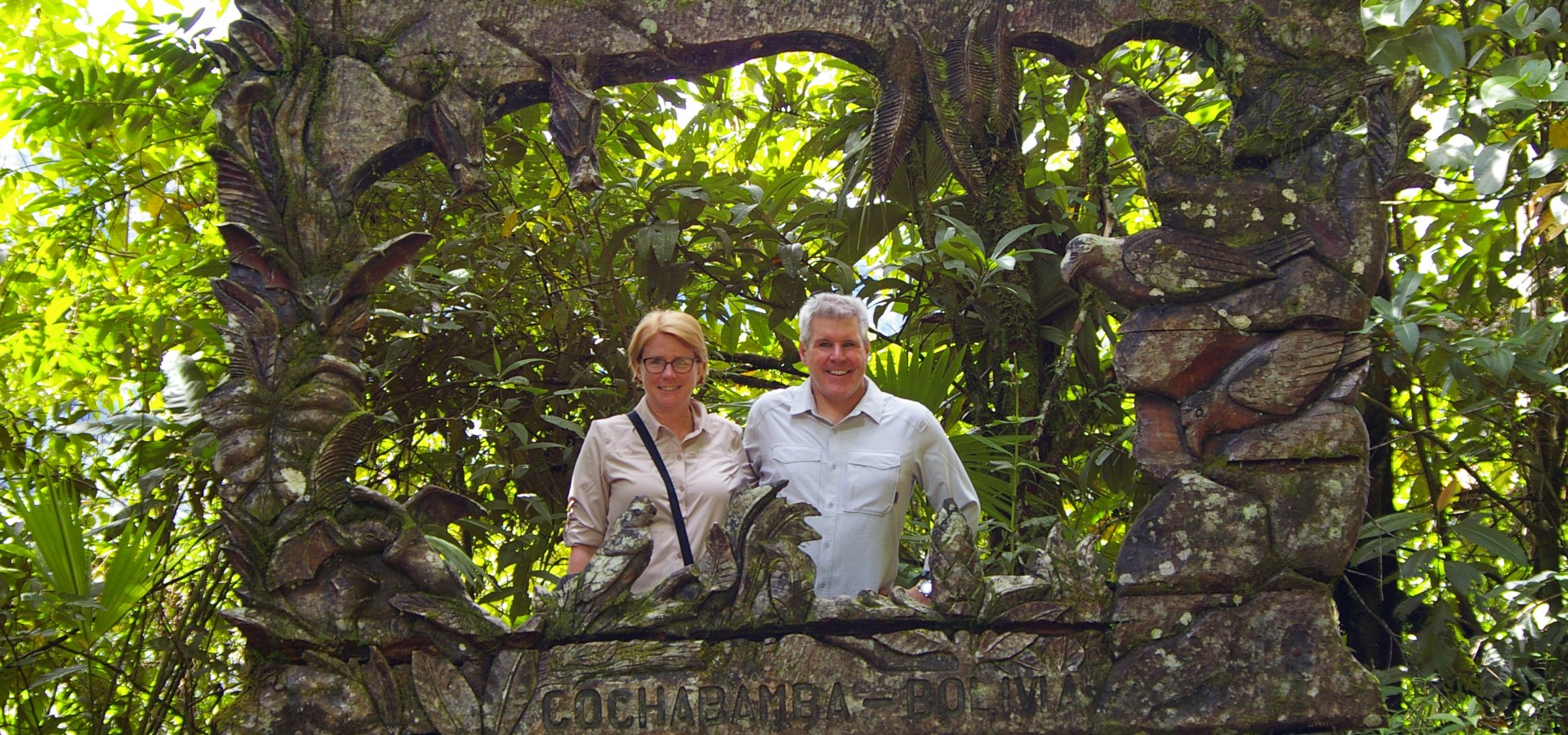We had spent the night in an eco-lodge, which in and of itself was an interesting experience. We woke up early and ate breakfast with our guide, Remy, who asked us if we’d checked under our bed before we went to sleep, to which we replied that we hadn’t. Apparently tarantula spiders are quite common in the area and are often found under the beds, a fact that would probably have been helpful to know. There was an interesting bird on the porch of our cabin as we prepared to make the drive to the Carrasco National Park, which was just the beginning of the interesting things that we would see that day.
As we neared the entrance to the park, we stopped at a home of the park’s official guide, who had some incredible wood carvings. From there we continued to the park entrance where another couple were also waiting to go on the tour. Before starting on the trail that led into the park, the park guide, who only spoke Spanish, told us about the poisonous snakes in the area, which Remy translated for us. Fortunately we didn’t see any of the snakes as we trekked through the jungle.
As we started into the jungle from the ranger hut, we quickly came to a river. It wasn’t the rainy season, so the river was fairly low, but still running fast enough that we hoped that we weren’t going to have to walk across it since the previous day we had walked through streams with water that was knee high. The park guide attached a harness to one of two cables that stretched across the river and started scooting across, perhaps we were going to have to zip-line again. Wrong again, the guide pulled a yellow cage across the water and we all climbed in. This was apparently common transportation across the many rivers in Bolivia and the coca growers were required to use them to transport their coca leaves.
The area is famous for the guacharos, a bird that lives in a cave and was once thought to be blind, but is actually not. To get their cave, we would hike along an overgrown trail and cross many streams while learning about the various plants and animals that inhabit the jungle. We saw several gorgeous butterflies, a poisonous frog, a giant centipede, and lots of ants including the famous leaf cutter ants and a couple of poisonous ants. Trees infested with red fire ants are used to punish local tribe members who are accused of committing violent crimes. They tie the offender to one of the trees, which are barren of any leaves on their trunks, and ants swarm from inside the tree and bite the person, killing them in less than ten minutes.
Finally we reached the cave with the guacharos who nest high in the walls of the cave. Remy and the park guide banged on the walls of the cave to stir the birds. In unison, the birds in the cave joined together, making a noise that can only be described as a growl. The first person to discover the birds had gone back to his tribe and told them that there was a jaguar living in the cave because that is exactly what the birds sounded like, the roaring of a large cat. The birds were difficult to see, but we did see a couple of them flying around inside of the cave. This, however, was only the first cave that we were to enter.
As we continued on the trail, the guide told us about the importance of the various bats in the area. There were vampire bats, who secrete a liquid when they go to bite animals that numb the bite area, allowing them to suck the blood without their victim knowing that they’ve been bitten. Using flashlights, we entered a cave with the vampire bats, trying not to make too much noise, but several bats swooped by our heads as we moved deeper into the cave. We were able to see hundreds of bats on the ceiling of the cave, but did not take any pictures, afraid that the sudden flash would cause them to all take flight at once, something we’d prefer not to see coming at us. Next we went into a cave with fruit bats, holding our breaths as much as possible as the floor of the cave was covered in guano and could be toxic.
Just walking through the Amazon jungle would have been fascinating enough for us, but going into the caves and seeing the guacharos was truly amazing. On the way out of the jungle, the guide took us to a coca leaf farm, one of many that are now allowed on national park land. As we neared the farm, the guide whistled, obviously announcing our presence so that any farmers wouldn’t take us for trespassers. Coca leaves are an important part of the Bolivian economy, but it is a shame to see the farms intruding onto national park land. Eventually we made our way back to the lodge where we ate a well deserved late lunch before driving back to Cochabamba. This was definitely one of the highlights of a trip that was filled with highlights.




